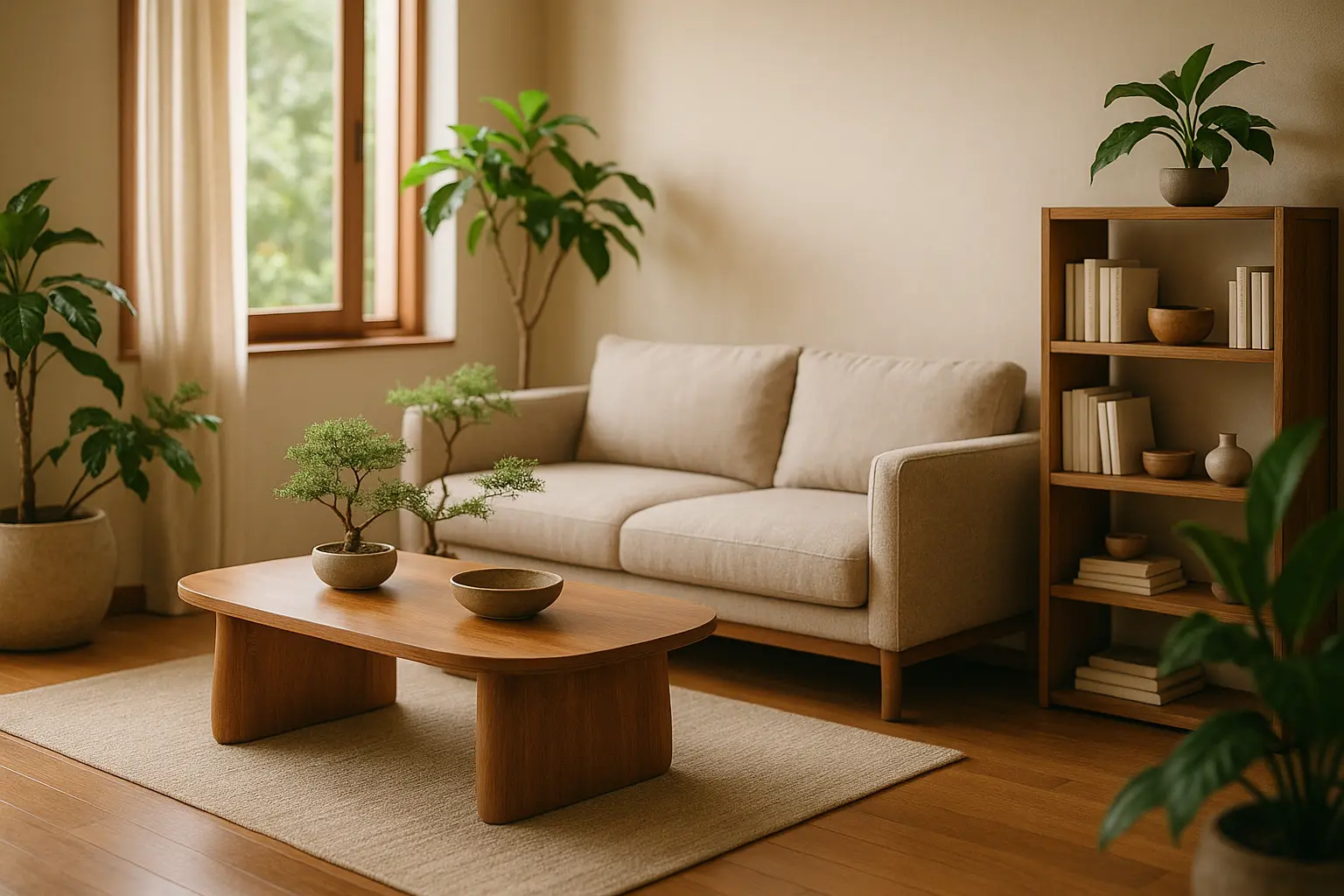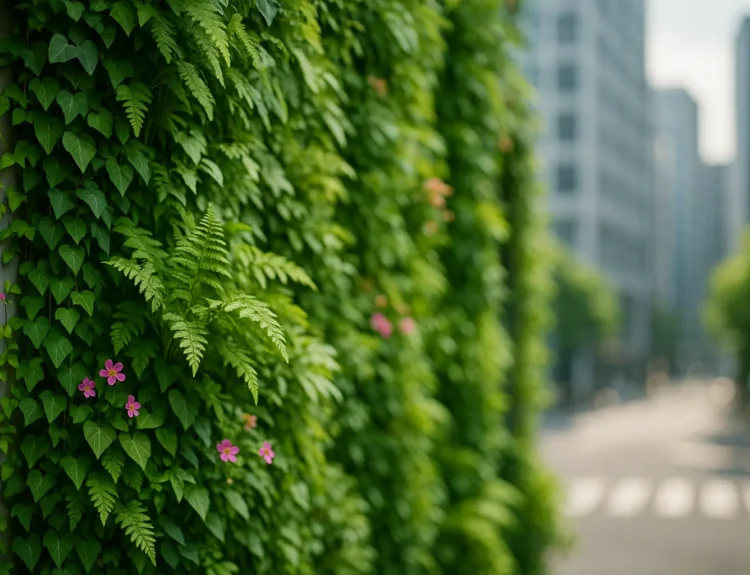In today’s fast-paced world, interior design has evolved into more than mere aesthetics. We strive to create spaces that are not just visually appealing but also harmonious, promoting a sense of well-being and productivity. This brings ancient principles, like Feng Shui, to the forefront of modern design. As we unravel the principles of Feng Shui, we invite you on a journey to explore how this age-old practice can transform our living spaces by enhancing energy flow, balance, and positive vibes. Let’s delve into the art of creating interiors that not only look good but feel good too.
The Core Elements of Feng Shui
At the heart of Feng Shui lies the belief that our surroundings can significantly impact our lives. This ancient Chinese philosophy revolves around five core elements: water, wood, fire, earth, and metal. Each of these elements plays a pivotal role in creating a balanced and harmonious environment.
Water symbolizes flow and communication. In our homes, incorporating water features like aquariums or fountains can enhance creativity and clarity, fostering positive energy. Wood, associated with growth and vitality, can be represented through plants or wooden furniture, adding a touch of nature and fostering a sense of renewal.
The fire element, representing passion and energy, can be integrated through warm tones or lighting. It’s essential to use this element judiciously to prevent overwhelming the space. Earth provides stability and grounding; elements like stones or pottery help anchor the energy in a room, promoting balance and calm.
Lastly, metal stands for precision and clarity. Incorporating metal fixtures or decor can aid in maintaining focus and organization. By combining these elements thoughtfully, we can create interior spaces that flow seamlessly, encouraging a sense of peace and productivity.
Mastering Energy Flow in Modern Spaces
The concept of energy flow, or “Chi,” is central to Feng Shui. Ideally, energy should move smoothly throughout our spaces, creating a sense of openness and vitality. In modern interiors, achieving this can be both a science and an art.
Firstly, decluttering is crucial. By minimizing excess and organizing our belongings, we can enhance the flow of energy throughout our homes. An open, uncluttered space allows for Chi to move freely, invigorating the environment and those within it.
Furniture arrangement plays a vital role as well. Positioning furniture in ways that promote conversational flow, accessibility, and comfort can make a significant difference. In the living room, for instance, chairs and sofas should be arranged to face each other, encouraging interaction and open dialogue.
Incorporating mirrors strategically can help reflect and amplify energy, making spaces feel larger and brighter. However, it’s crucial to be mindful of mirror placement, as poorly placed mirrors can lead to energy imbalances.
Lighting also influences energy flow. Natural light is the best source, creating warmth and vibrancy. However, in areas lacking sunlight, layered lighting solutions can help maintain a balance of energy throughout the day.
By mastering these elements, we can transform modern interiors into spaces that not only function efficiently but also support a balanced and prosperous life.
Creating Harmony with Colors and Materials
Colors and materials wield significant influence over the ambiance of our homes. In the realm of Feng Shui, the careful selection of colors and materials can either enhance or stifle the energy within a space.
Colors are more than just visual stimuli; they evoke emotions and influence mood. In Feng Shui, each color is associated with specific elements and energies. Earthy tones like browns and beiges connect us to the earth, providing a sense of stability. Blues and greens evoke calmness, mirroring water and wood, while reds and oranges introduce the vibrancy of fire.
When designing a room, we must consider balance. While bold colors can energize, they should be counterbalanced with softer hues to prevent over-stimulation. Neutral palettes, paired with strategic pops of color, allow for a harmonious flow of energy, promoting tranquility and creativity.
The choice of materials is equally crucial. Natural materials like wood, stone, and bamboo are favored in Feng Shui, as they connect us to nature and instill a sense of peace and authenticity. Metal elements, used sparingly, can add refinement and order.
By thoughtfully integrating colors and materials, we can create interiors that not only appear modern and stylish but also promote well-being, inviting harmony and positive energy into our lives.
Balancing Functionality with Aesthetics
In the quest for harmonious living spaces, functionality and aesthetics must coexist. Feng Shui emphasizes the importance of creating spaces that are not only beautiful but also practical. In modern interiors, this balance is more relevant than ever.
A well-designed space should reflect our personal style while meeting our daily needs. We must prioritize functionality without sacrificing aesthetic appeal. This entails thoughtful furniture choices, efficient layouts, and mindful decor selections.
For example, in the kitchen, often considered the heart of the home, functionality is paramount. Adequate storage, intuitive layouts, and durable materials ensure that the space serves its purpose effectively. However, incorporating elements like wood accents or vibrant colors can elevate the kitchen’s aesthetic, making it a pleasant and inviting atmosphere.
In the living room, the balance between comfort and style can be achieved with a blend of cozy furniture and elegant decor. Layered textures, such as soft throws or plush cushions, can create a warm, inviting environment without compromising on visual appeal.
Ultimately, the goal is to craft spaces that resonate with our lifestyle while enhancing our well-being. By harmonizing functionality and aesthetics, we ensure that our home not only meets our practical needs but also nurtures our soul.
Incorporating the principles of Feng Shui into modern interior design offers us the opportunity to create spaces that not only delight the eye but also nourish the spirit. By thoughtfully integrating the five elements, optimizing energy flow, and balancing color with texture, we craft environments that support our overall well-being.
As we continue to design spaces that breathe, it becomes evident that Feng Shui offers timeless wisdom, guiding us toward creating interiors that are not just places to live, but sanctuaries that enhance our lives. In embracing these principles, we invite positive energy, balance, and harmony into our modern homes, fostering a life of joy and fulfillment.
FAQ
What is Feng Shui and how does it influence modern interior design?
Feng Shui is an ancient Chinese practice that focuses on harmonizing individuals with their surrounding environment. In modern interior design, it aims to create spaces that promote positive energy flow, enhancing well-being and balance within a home.
How can the layout of a room affect energy flow according to Feng Shui principles?
In Feng Shui, the arrangement of furniture and objects can significantly impact the flow of chi, or life energy. Ensuring clear pathways and placing key furniture like beds and desks in commanding positions can create a more harmonious and inviting atmosphere.
Which colors are considered beneficial in Feng Shui for modern interiors?
Colors in Feng Shui are chosen based on the five elements: wood, fire, earth, metal, and water. For example, green and brown represent wood and promote growth, red and orange represent fire for passion, and blues and blacks represent water for tranquility.
Are there specific items or decor that enhance Feng Shui in a contemporary setting?
Yes, incorporating elements like mirrors for energy expansion, plants for vitality, and water features for wealth can enhance Feng Shui. However, it’s important to balance them with the overall design to maintain a modern aesthetic.
How can one apply Feng Shui principles in small or limited spaces?
In smaller spaces, maximizing natural light, using multifunctional furniture, and keeping clutter to a minimum are essential. Incorporating mirrors and reflective surfaces can help expand the space and improve energy flow.



